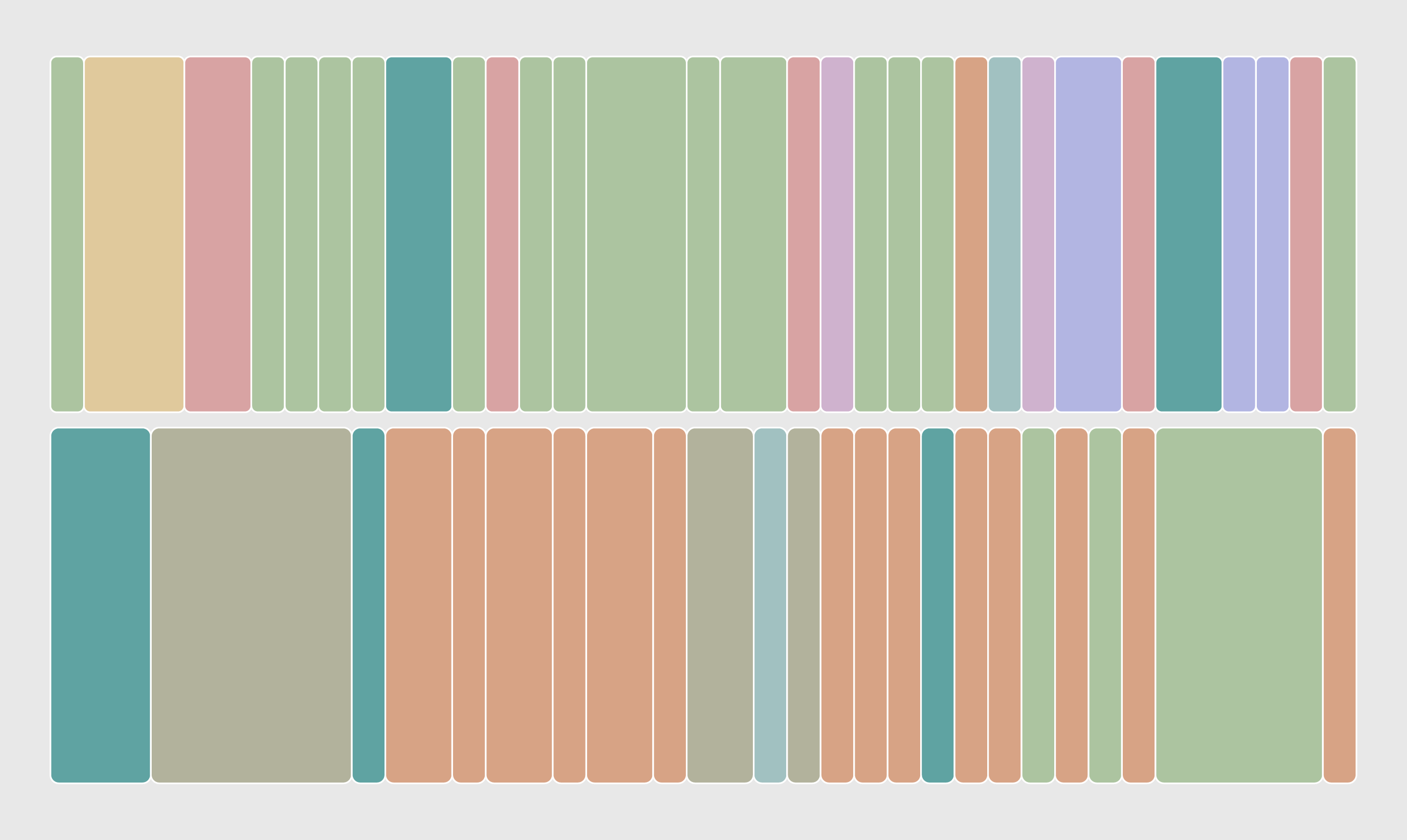Jobs of a Certain Age

There are hundreds of occupations, and while the exact number varies by classification system, most U.S. government organizations list about 500 of them. You can probably guess at least a handful of the most common. Cashiers. Drivers. Teachers.
It gets more interesting the further down the list you go, breaking it down by demographic. You get a more accurate picture of the occupations throughout our lives.
To start, here are the ten most common jobs overall according to estimates from the 2018-2022 American Community Survey.
Most Common Jobs, Overall
A catch-all occupation for “other” managers puts the job at the top. There are many. Color indicates general job category.

Most Common Jobs, Men and Women
We can look at the ten most common jobs for both men and women, which shows more construction and production for the former and more service and administrative support on the latter.

The managers occupation drops from the top spot in this view, because they are split between men and women. Although, other managers are number two for men, so the job leans towards men. Drivers, the most common for men, and registered nurses, the most common for women, lean more heavily towards the respective sex.
Let’s get more details by looking for the most common jobs by age and sex.
Most Common Jobs, by Age and Sex
We are cashiers during the teenage years. Drivers come in all ages, whereas nurses and teachers enter the picture once they earn their credentials. Women who work in their later years are commonly secretaries.

The jobs above are most common for each sex during different times in our lives. However, they’re not really age-specific. They’re common at each age, because they’re common overall. There are a lot of drivers, secretaries, teachers, and nurses.
Are there jobs that lean heavily towards a given age?
A while back we looked for jobs that were unique to each state using a metric called a location quotient. It’s a comparison between the rate within a group against an overall rate. For example, California has a lot of actors relative to the number of actors per worker nationally. The chart below shows jobs by a similar metric but with age instead of location. An age quotient.
Age-Specific Jobs, Men and Women
The jobs that trend towards a certain age stand out more. Enter the embalmers and crematory operators in our late 60s and 70s.

The jobs with the highest age quotients, and hence are the most age-specific, tend to be at the younger and older ends of the timeline. A lot of restaurant workers in fast food and in dining halls are young but the umpires and hostesses win out.
Similarly, on the older end, crossing guards, farmers, and religious workers also stand out but not as much as embalmers. Maybe that’s something to consider in my later years after the robots have taken over.
Notes
I downloaded American Community Survey microdata via IPUMS. I analyzed and visualized the data in R. I edited in Illustrator.
I used a threshold of at least 400 workers for each job to qualify. The gaps in the later years indicate ages where the counts were too low, because few people work into their 90s.
Analyze, visualize, and communicate data usefully — beyond the defaults. Become a member →


